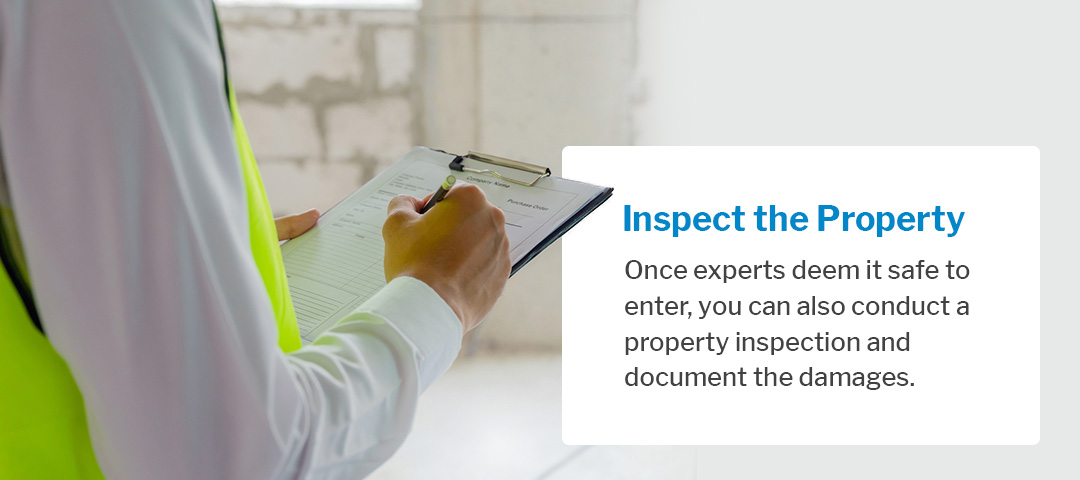
 Commercial flooding can cause significant impairments to businesses. Rushing water can burst through external barriers and harm interior features like furniture, documents and other essential possessions. If the damages are severe enough, you might have to pause customer services temporarily.
Commercial flooding can cause significant impairments to businesses. Rushing water can burst through external barriers and harm interior features like furniture, documents and other essential possessions. If the damages are severe enough, you might have to pause customer services temporarily.
A flood response plan can help you reduce damages and recover more quickly if your property floods. Here are six essential steps to take after a commercial flood.
One of the most important initial steps is shutting off utilities. Turning off electricity and gas can prevent further accidents and reduce your bill. You can switch off the electricity from your breaker box, but only if you can reach it without standing in water. Using the fuse box with the surrounding water becomes an electrical hazard. If you cannot access it safely, call your local service provider so they can manually turn off the electricity.
You can also shut down water services, especially if a broken pipe or internal leak caused the flood.
Your business should call its insurance agency as soon as possible following a flood. You can explain flood details like:
After you finalize an inspection time, the agency sends a representative to survey the damage. They provide a detailed report on expected repair costs or lost assets. The insurance agent can also help you determine the flood’s origin, which is vital for the claim process.
If the flood was severe enough to require a business closure, your insurance agency might also help find a temporary workspace. You can use the designated building to provide services until you can return to your original property.

Once experts deem it safe to enter, you can also conduct a property inspection and document the damages. Depending on the circumstances, you might want to investigate your building before or after an insurance agent arrives.
Make sure the building is structurally sound and doesn’t contain any holes. For future reference and insurance evidence, you can take photos or videos of the property’s condition. Images also provide a visual record of items you need to replace.
Safety protocols are essential for flood inspections. Sewage and other contaminants can seep into floodwaters and make them hazardous. Follow these tips:
You should contact a water restoration company before attempting to clean your property. Depending on the flood’s severity, the cleanup process could require specialized equipment and procedures. Restoration professionals can clean your property thoroughly, reducing business downtime. They can also help with the following:
It’s important to keep employees and clients informed of your situation. Your staff should know about closures or relocation plans as soon as possible so they can make proper arrangements for their work schedules. The flood might have impacted their personal belongings or work documents, making it essential to keep them updated.
In addition, you can tell customers about your property’s condition and explain what happened. If you need to halt services temporarily, you should inform clients about how long you’ll be away and whether you will offer remote services in the meantime. Or, explain your temporary location plans and provide directions. When you return to your original property, remember to spread the word. You could even host a reopening event to generate some excitement.
Flood response plans are essential for your property’s safety. If you sustain extensive damages, you might need more comprehensive measures to minimize future risks. Planning for the future reduces the chances of enduring severe harm again.
You could take actions like the following:
Flood protection for commercial properties is essential. The right prevention tools can minimize damage and business downtime. At Portadam, we provide clients with customized flood protection assistance. We apply our extensive knowledge and field experience to create individualized solutions. Our range of deployable flood solutions can help commercial properties mitigate flood risks.
Our dedicated team uses a thorough consultation to build your flood protection plan:
Portadams’ deployable systems are reusable, durable and flexible. We rigorously test each system to make sure it meets client needs. This investment can protect your property for many years.
To get started with Portadam, request a quote or site survey today.